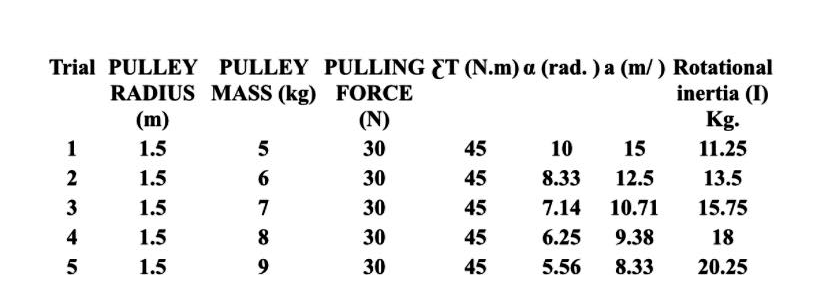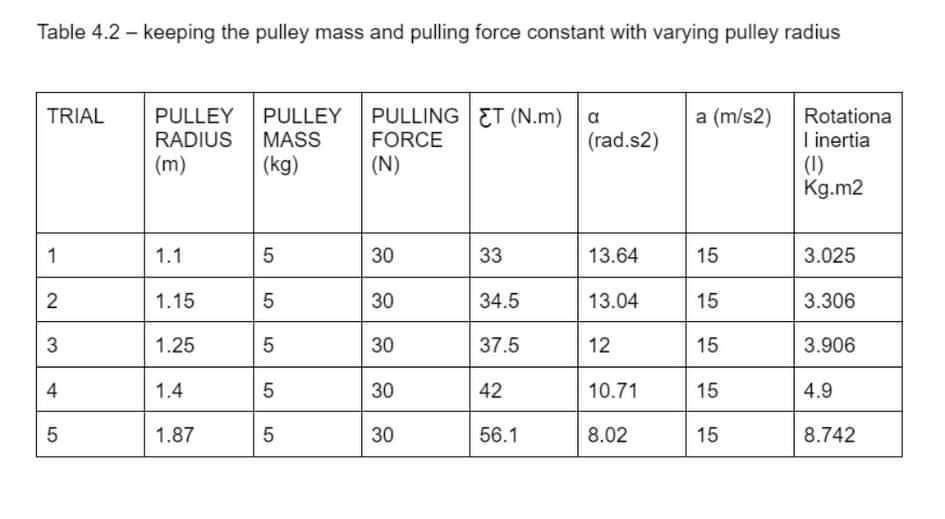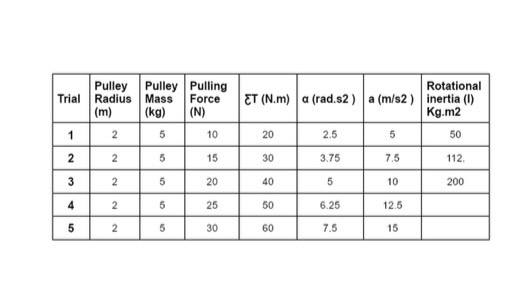Question
do not get the same post. good feedback if satisfy. 4. Selecting other materials aside from solid sphere, would you obtain the same relationships for
do not get the same post. good feedback if satisfy.
4. Selecting other materials aside from solid sphere, would you obtain the same relationships for the angular acceleration, linear acceleration, summation of torque and moment of inertia considering the three conditions in Table 4.1, T 4.2 and Table 4.3?
Table 4.1 keeping the pulley radiys and pulling force constant while varying the pull mass
T 4.2 keeping the pulley mass and pulling force constant with varying pulley radius
Table 4.3 keeping the pulley radius and pulley mass constant while varying the pulling force
4.1



Step by Step Solution
There are 3 Steps involved in it
Step: 1

Get Instant Access to Expert-Tailored Solutions
See step-by-step solutions with expert insights and AI powered tools for academic success
Step: 2

Step: 3

Ace Your Homework with AI
Get the answers you need in no time with our AI-driven, step-by-step assistance
Get Started


